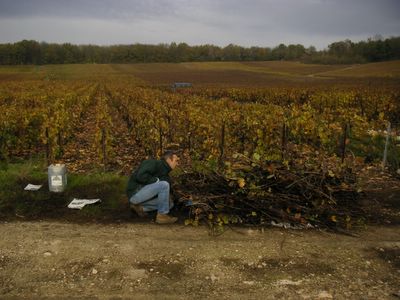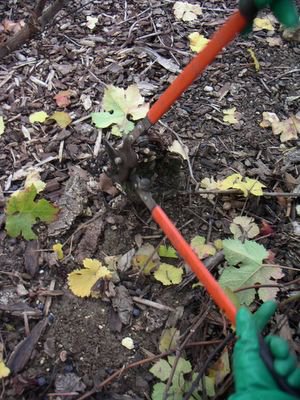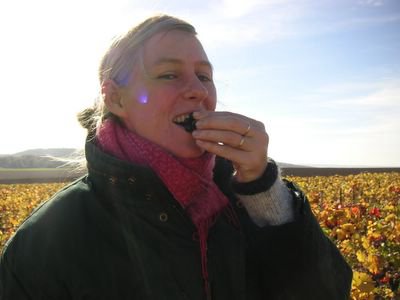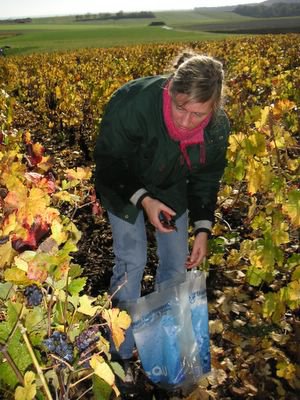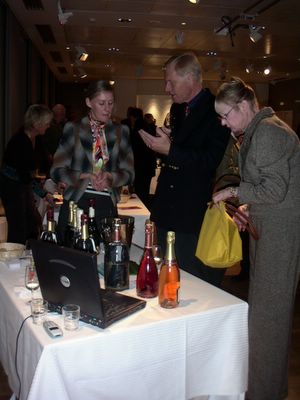
Almost naked vineyards in the plots of Veuve Clicquot at Verzy.
In the second half of November the cold of winter has arrived very suddenly. The leaves of the vines have fallen accordingly.
Just one week ago the yellow vineleaves - now in the last movement of their autumnal symphony of colours - still managed to cling to the confusion of branches of the vines. The cold of this last week however has made most of them fall. And after a few days on the ground the leaves look so withered as if they had spend weeks between the rows and not just days.
Early pruning
Only now you should start pruning your vine, that is, if you absolutely cannot wait. The best pruning - so the experts say - is done in the month of March. But if you have to deal with a lot of hectares - or only have the weekends to deal with the job - you may have to start early, no matter what is the best.
But then, of course there is a limit even for early birds. We have seen a few of them pruning already before the leaves were gone. The blue columns of smoke from les brouettes - special wheelbarrows made of old oil barrels - reveal what is going on. A sight like this just about makes the few black hairs left turn instantly white. It can damage a vine severely to prune it even before the sap has dropped meaning that the plant is not yet dormant.
The problem is, that the wound, that you cannot help adding to the plant when you prune it, will heal very badly this time of the year. This will leave the vine just about defenceless towards the frost of the winter.

Withered leaves on the floor.
Early pruning or not
The norm says 180 hours of work to prune our 2/3 hectares, which makes it a hobby, that you need to plan quite detailedly in order to fit in all the work in the available weekends for just about all vinter.
This is the reason why we know several people who chooses to preprune their vines. A task, that is performed right now. Prepruning simply means that you cut off the top of the vines with a chain saw. This is not a job for delicate soals like me. The pruning itself is a job where detail is king and where you look carefully into what you do. The prepruning means walking up and down the rows with your saw while cutting off branches more or less in the same heigth but with no regards to any specific needs of certain plants. Doing it however saves a lot of work at pruning time.
However, we have opted not to preprune. According to the theory of Alain it is better for the general health of the plant to leave it. This is because you very easily cut too much at the wrong places, for example too many buds from a branch that you later may need.
På dansk
Copyright: The copyright for text and photos at bobler.blogspot.com belongs to Solveig Tange. You may use my articles, photos or parts of them for non-commercial use and if I am credited as the author. Feel free to link to this site but not in your own frameset please.
